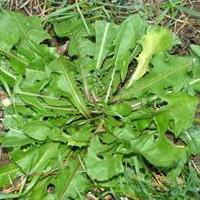 Lawns are expected to provide a good recreational surface and a decorative setting as a backdrop for floral displays both at the same time. Those with families will want to provide a playing surface for their children, whilst keen gardeners will want a well-manicured lawn which will be pleasing to the eye.
Lawns are expected to provide a good recreational surface and a decorative setting as a backdrop for floral displays both at the same time. Those with families will want to provide a playing surface for their children, whilst keen gardeners will want a well-manicured lawn which will be pleasing to the eye.
In both cases weeds are a nuisance and can be a difficult problem to overcome.
Not only do they distract the eye if we want a beautiful setting for the rest of the garden but they also compete for light, water and nutrients and if they are left unattended they will, in due course, crowd out much of the grass. This has become most evident over the last few years with hot dry summers. In such years many of the deep rooting weeds have been able to survive where more shallow rooting grasses have struggled.
Many weeds seem to have developed their own strategy for survival. They usually grow vigorously and often have a horizontal growth habit which protects them from the mower.
The most effective way to protect the lawn from weed encroachment is to have a dense, thick and healthy lawn in the first place. Weed seeds need soil contact to germinate so the tighter the grass knits together the less chance weeds have of getting established.
However, we all know that however hard we try, some weeds seem able to creep in and get established before we know it. In this case the answer is to use a selective weed killer and the sooner the better making sure that you only spray the weeds directly (spot treatment). I say this because some lawn maintenance companies have adopted a policy of spraying the whole of the lawn, which is not only wasteful, but is environmentally unfriendly.
Modern selective weed killers are systemic herbicides which means that they kill all of the plant including the root.
Some words of advice when using a selective lawn weed killer.
- If you are unsure ask for advice when purchasing a weed killer
- Always read the instructions on the container.
- The best time to apply a lawn selective weed killer is when the weeds are growing strongly so early spring is best, but they can be applied at any time throughout the growing season.
- It is best to leave the weed killer as long as possible to be absorbed through the leaves and do its work.
- Hold off mowing for 7 days.
- Remember not to put the clippings on the compost heap as the active ingredients can poison the compost.
- Do not spray in windy conditions.
- Keep the weed killer well out of reach of children
I have found that one of the most effective lawn selective weed killers is Green Force which is effective against most major lawn weeds including clover. Green Force is widely available and can be purchased on DJ Turfcare website


